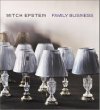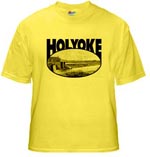by Laurel | June 23rd, 2009
June 23, 1899, page 8
Cornelius Barnes and Mary J. Macdonald were married Wednesday afternoon. A reception was given to them in the evening at O’Neill’s hall.
June 23, 1902, page 8
Mountain Park Company Actress Ill
Miss Gertrude Riggs, a member of the mountain park opera company, is ill at her home in Holyoke, being taken with an attack of what may be appendicitis while playing Saturday night at the casino. She fainted away repeatedly in the casino and medical aid was summoned, Dr. C. A. Allen attending her. Dr. Allen said last night that it was imperative that she remain quiet for a few days an she will be unable to take part in the opera to-day without grave danger. She dressed yesterday and went about the house, and as a result brought on another painful attack.
June 23, 1907, page 12
Holyoke Beef Trade Changes
The Texas Steer “On The Hoof”
No more radical change of business methods has obtained in this and other New England cities than that of the wholesale beef business of the early years and that of to-day. Instead of the long refrigerating rooms of the present, with the rows of neatly dresses carcasses of well-fed steers, 35 to 40 years ago one would see a herd of wiry, fierce-eyed; long-horned Texan cattle dashing wildly through Holyoke’s highways till they were rounded up at the local slaughter houses. The best remembered cattleman in Holyoke was William Nash, who used to buy the steers at Albany, ship to Holyoke, and then parcel them out among the local abattoirs. In 1868 the J. F. Allyn slaughter-house stood about where W. F. Wheelock’s house is now located, near the corner of Pleasant and Hampden streets. The plant of A. & S. B. Allyn and others was in Oakdale somewhere near the corner of Locust and Sycamore streets; the Edwin Perkins plant was at what is now the northeast corner of Lincoln and Taylor streets. Back in the late ’50s or early ’60s there is said to have been an abattoir near what is now the corner of Beech and Appleton streets.
The Texan steers of that day were better fitted for amphitheatrical combat than for beef consumption, — active, fierce and muscular as panthers. In killing they were driven into a narrow inclosure, a rope thrown over the tremendous sweep of their horns; then by use of pulley blocks they were drawn into the pen. Now and then one escaped , and with the rapidity of lightening mad for his would-be executioners who were forced to hit the high places. One brindled tiger-like steer escaped in 1871, and was afterward shot on Blandford mountain. A Holyoke marketman, not the pioneer of those actively engaged in business was quite severely handled by an enraged steer when a boy of 14.
It can well be imagined that these sinewy, long-horned, deer-footed animals, usually sold for consumption the day after killing were touch eating, and the dentists naturally flourished. The quality of the beef gradually improved with better breeding, and the marketmen ceased individual slaughtering, the firm of Nash & Perkins undertaking the entire work.. In 1878 astounding reports began to prevail of “refrigerator beef,” killed in Chicago and shipped East. Never was an innovation more fiercely resisted at first. A large part of the public devoutly believed first that it could not be sweet and fresh, and even if fresh, the flavor and appetizing qualities could not be preserved. The Swift Bros introduced the dressed-beef system to Holyoke in 1879, and it seemed that there must be a merry war between the newcomers and the strong local firm of Nash & Perkins, who were of the old fresh-slaughtering school. William Nash, however, was a man of long experience and remarkable foresight. He had grown up in the business, starting by doing his own cattle driving, often corralling a herd of unruly steers which would have defied the efforts of half a dozen unskilled hands, and had taken careful note of the gradual evolution of the beef industry. Within 30 days of the Swift Bros invasion he had concluded that is was a case of compromise and combine or be annihilated, and he chose the former, becoming local agent for the Swift company and continuing high in their confidence to the day of his death. In the opinion of old-time marketmen, conditions of preparing beef for consumption are infinitely better and more wholesome than those which obtained 40 years ago.
Excerps from the Springfield Republican.








